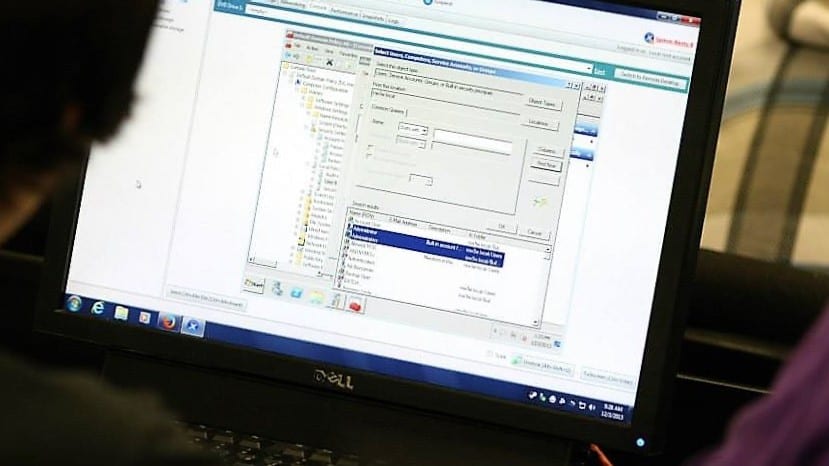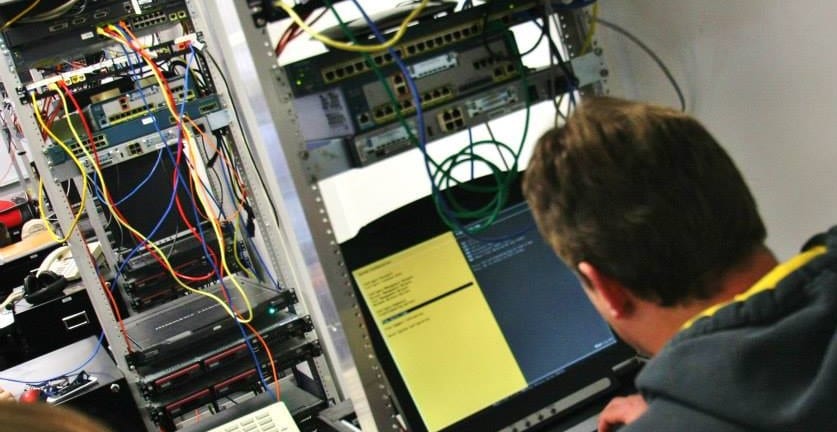NOTE: This is historical content that may contain outdated information.
Guest Author Marc Matthes
I’ve been an educator for almost 30 years, starting off in the electronics field. Over time I moved to the computing field, working with Linux, BSD, SuSE, Novell, and other systems. The online communities and documentation for Open Source projects provided a wealth of resources, which translated well to what I was doing as a Professor.

About eight years ago, I discovered FreeNAS. After working with it for a while, I realized how powerful of a tool it is, on par with other storage offerings I have used, and that it would work well within our curriculum at Iowa Central Community College.

How FreeNAS became a central part of our program
About a decade ago, we developed an online education program. We found that many of the students struggled to learn everything there was to teach in our two-year program. We would give our more advanced students side projects with various storage technologies, but only a handful of students would come out of the program with the skills they needed to enter the field.
As I became more familiar with FreeNAS, I saw it as a powerful tool to teach our students. I showed another professor in our Computer Networking Program who I had an overlapping curriculum with and we both recognized the potential of FreeNAS in the classroom. So, around five years ago, we started to work together to integrate a storage curriculum into the program by utilizing FreeNAS.
Our program introduces FreeNAS in the second year. We use a GNU/Linux hypervisor with our server rack to give each student their own FreeNAS virtual server that they maintain throughout the program. This means they don’t have to compete for lab time or start from scratch with each new course. Instead of using a common FreeNAS image, each student has their own FreeNAS environment that they use throughout their program. Over the course of the program, students set up their virtual servers to work within both Windows and GNU/Linux environments, establishing the proper protocols and configurations for each. They also build and use Xen and VMware environments for FreeNAS and have to make sure that it stays functional as their network environment grows in complexity.

A valuable tool for educators and students
Because of the availability of quality documentation, the existence of online communities, and the simple fact that I can look at the code directly, Open Source projects can be great resources for educators to utilize. When those projects are in active development and have enterprise-grade features, they are of great value for students entering a professional field. FreeNAS has all of these things. It also happens to be very easy to use, and, consequently, easy to teach.
In our program, we start off by having our students read online documentation, enter the FreeNAS forums, and use the FreeNAS community as a resource. We also spend some time going through some of the available how-tos up front. Once they get acclimated, students find FreeNAS to be straightforward and pick it up quickly. Even those that are only familiar with Windows or Apple get it intuitively.
FreeNAS works very well straight out of the box and doesn’t need tinkering to get things up and running. We have a NetApp system that we also use in our coursework, and I don’t feel as comfortable letting students use it as any change they make could have college-wide ramifications. This would require me to fix it, and take time away from my role as an educator. FreeNAS, on the other hand, is difficult to corrupt, especially with its snapshot capabilities that allow you to roll back the file system to previous states.
The students just get FreeNAS. It is instinctively understandable. This means they spend less time drilling down on all the particulars of administering a storage solution like NetApp and more time learning the language and fundamental concepts of storage. This means that, in the course of our two year program, our students walk away with a strong foundation in storage administration.
FreeNAS ensures that our students are prepared for the workforce. Even if the organization they go to work for uses some other storage platform, working directly with FreeNAS gives them the ability to adapt with little difficulty.
We had one student in our program who was recently hired full-time for a position. The customer was a NetApp shop, but FreeNAS gave him the knowledge and confidence to be conversant in storage concepts. He is not alone in his success. Students overall have done extremely well and have around an 85% placement within six months after participating in our two-year program. Right now we have regional employers calling and asking us for more graduates and they even send their own people for us to train.
Conclusion
As an educator, it’s my job to ensure that students have the skills they need to succeed. FreeNAS is a powerful tool in teaching those skills within the limited time frame of a two-year program. The success we’ve had with our students entering the workforce, and even in intercollegiate competitions, demonstrates the effectiveness of FreeNAS as an educational tool. Also, the simple fact that our students enjoy working with FreeNAS makes it an ideal solution for educating students in the growing field of storage. I am happy to have such a well-designed platform in FreeNAS to prepare my students for their careers.